After a sixty-year absence from Louisiana, the whooping crane is making a comeback thanks to a reintroduction effort. The large white birds are nesting in the wild and raising their offspring in the coastal prairies of the state.
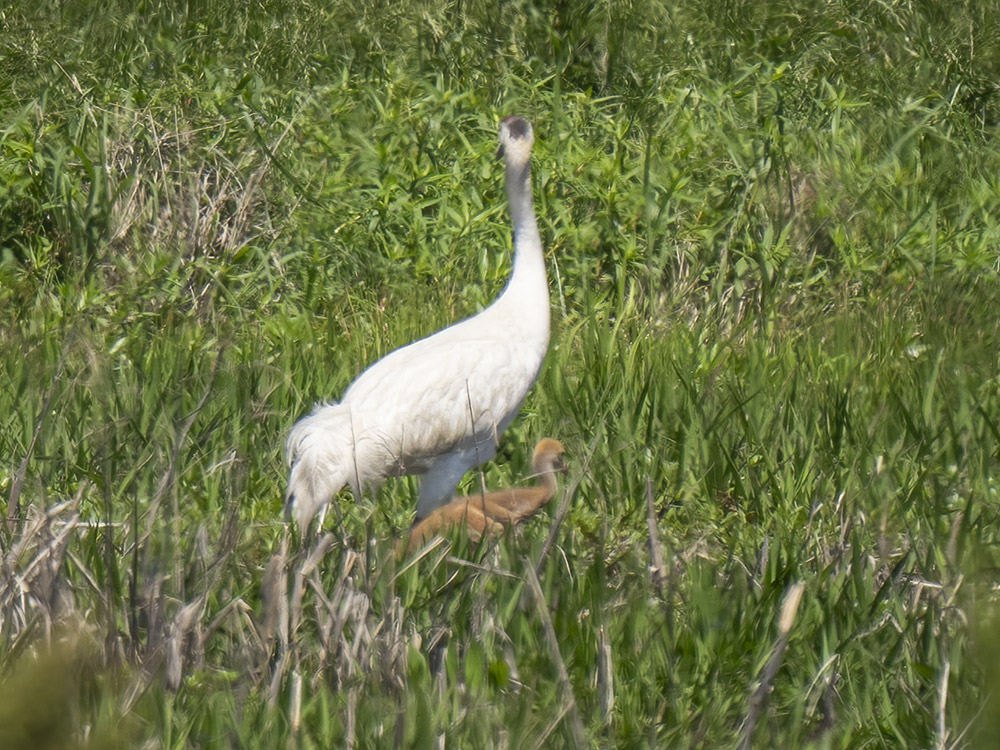
tracking the return of the louisiana whooping crane
Sarah Zimorski turns on a radio receiver in her pickup truck. She dials up a frequency that is paired with a transmitter on the leg of a whooping crane. We hear loud static followed by a high-pitched beep, beep, beep. “Generally, the closer you get, the louder the signal is,” Zimorski tells me. She is a biologist with the Louisiana Department of Wildlife and Fisheries and is in charge of a program to reintroduce the whooping crane to the coastal prairies of southwestern Louisiana.
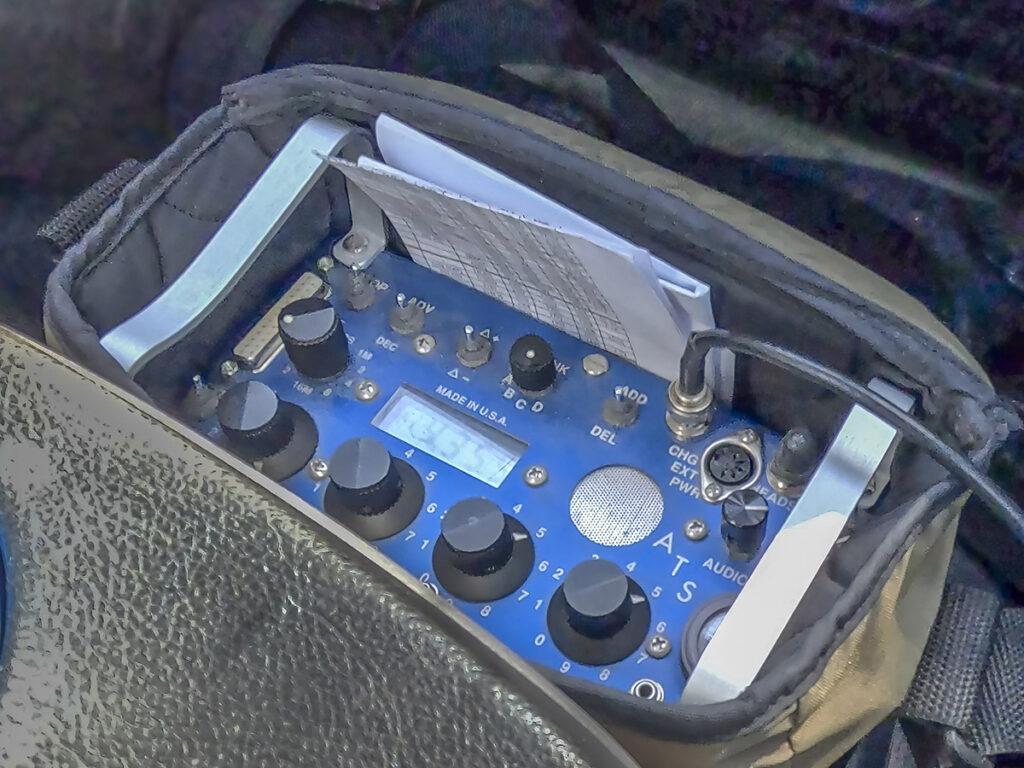
whooping crane reintroduced to its louisiana home
The reintroduction of the whooping crane in Louisiana began in 2011. That followed a more than 60-year absence of the large white birds. The whooping crane is the largest flying bird in North America. But in 1950, the last whooping crane left Louisiana and the future of the five-foot tall birds was in doubt. “It almost seems like it’s a miracle that they did not go extinct,” Zimorski says. She notes that in the early 1940’s there were only 21 whooping cranes left in the wild.
zoos help with breeding the next generation
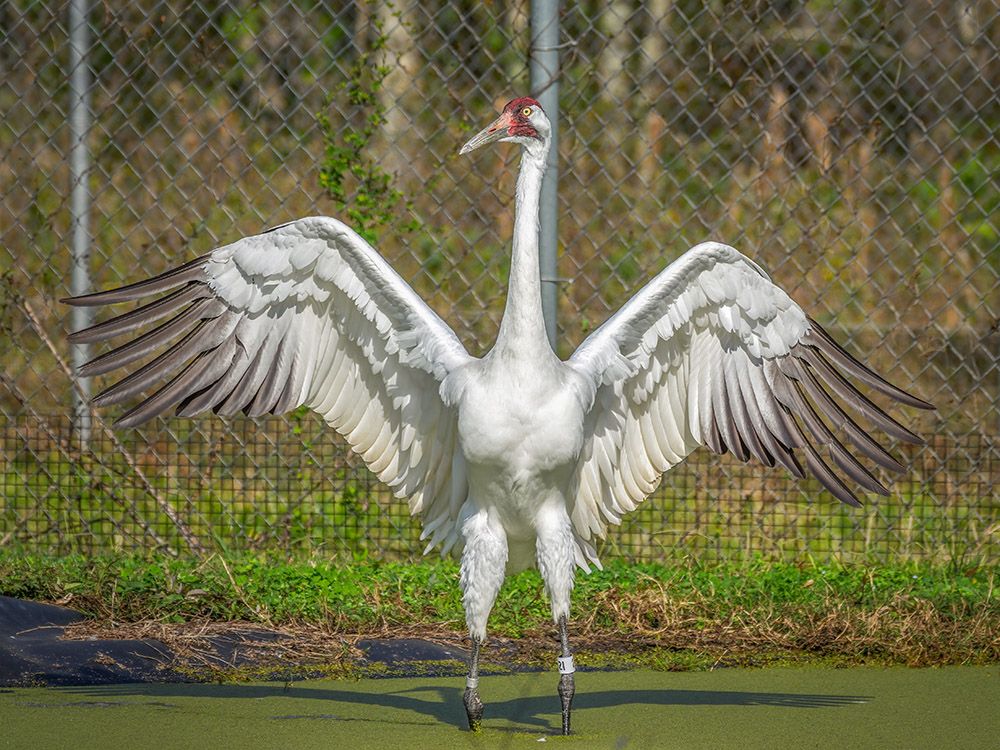
To reintroduce the birds into the wild, eggs are hatched at the Audubon Institute in New Orleans and other bird facilities. A few months after hatching, the adolescent birds are brought to the White Lake Wetlands Conservation Area in southwest Louisiana. Up to this point, all handlers wear white bird costumes, so the young whooping cranes don’t become dependent on humans. The birds get a colored tag and a tiny transmitter for tracking their movements. The young birds spend a few weeks in a netted area of the White Lake Preserve and are eventually released into the wild.
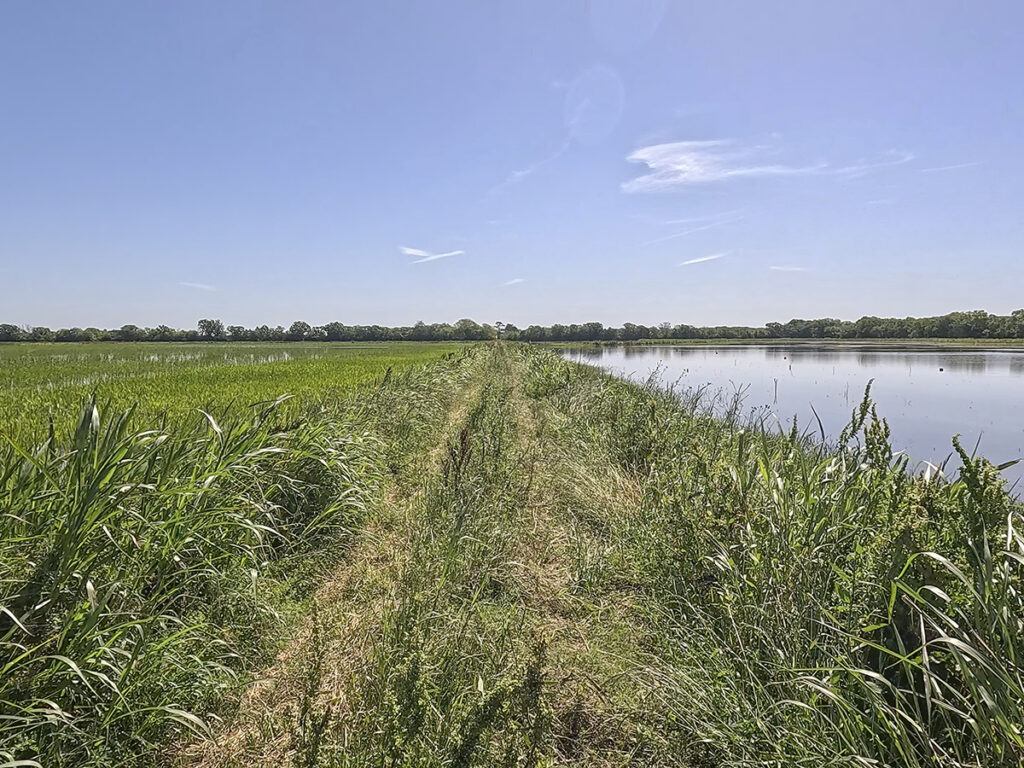
Our first stop is a flooded field being used as a crawfish farm in southern Acadia Parish. Zimorsky points to the large nest that is surrounded by shallow water. We spot the cranes off the in distance. The two parents are followed by their tiny chick as the birds pick their way through tall grass and shallow water looking for food. Later, we spot a second pair of whooping cranes and their chick in a different crawfish pond in nearby Vermilion Parish. “Those agricultural fields are basically like a shallow freshwater marsh, which is exactly what the cranes are looking for,” Zimorski explains.
wild whooping cranes featured on tv
zero to eighty in a dozen years
Since the whooping crane reintroduction began 13 years ago, their wild population in Louisiana has grown from zero to eighty. “And that doesn’t include the new chicks”, Zimorski adds. It is a slow process since each pair of adult cranes typically has one surviving offspring each year. And spotting the nests, with the parent whooping cranes and a young chick is exciting. It’s proof that the giant white birds are slowly making a successful comeback in the coastal wetlands of Louisiana.
captive cranes help the species recover
The Audubon Species Survival Center in New Orleans has played a critical role in the comeback of the highly endangered whooping crane. See how Audubon is kickstarting the birds’ recovery. Click here for the story.
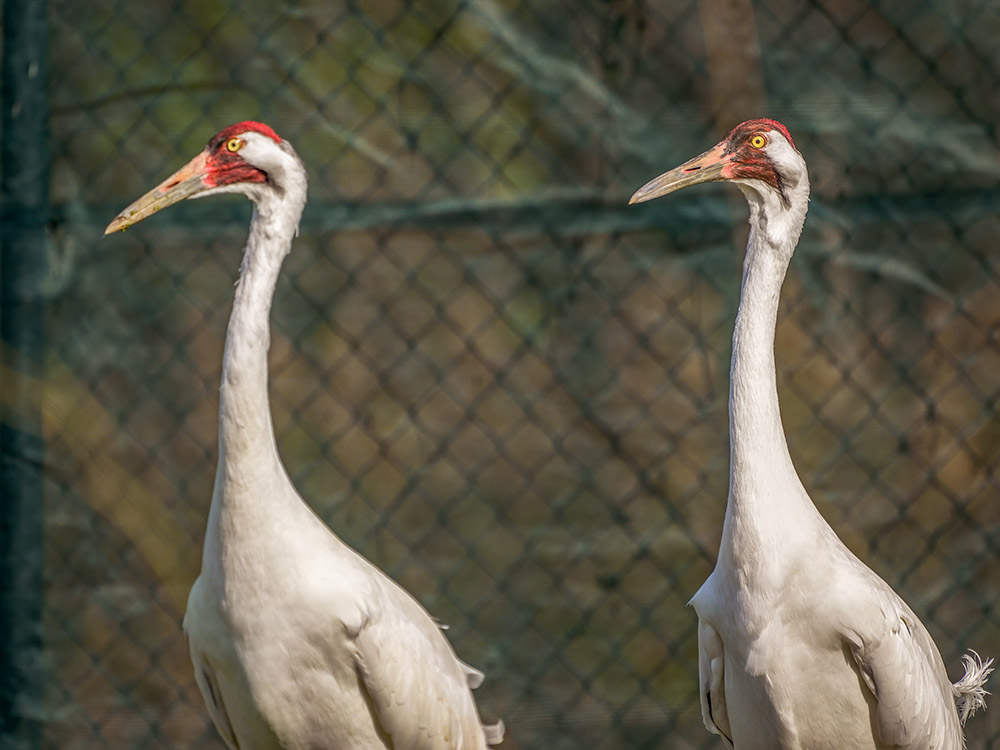

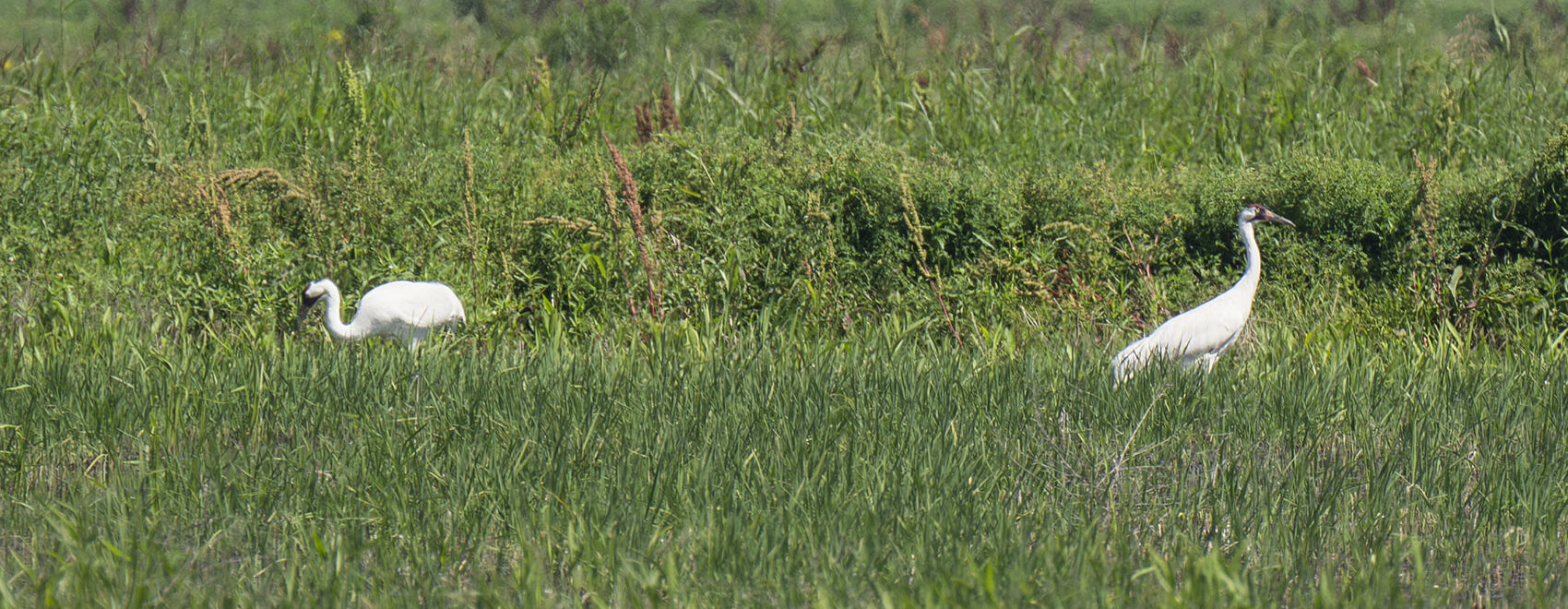
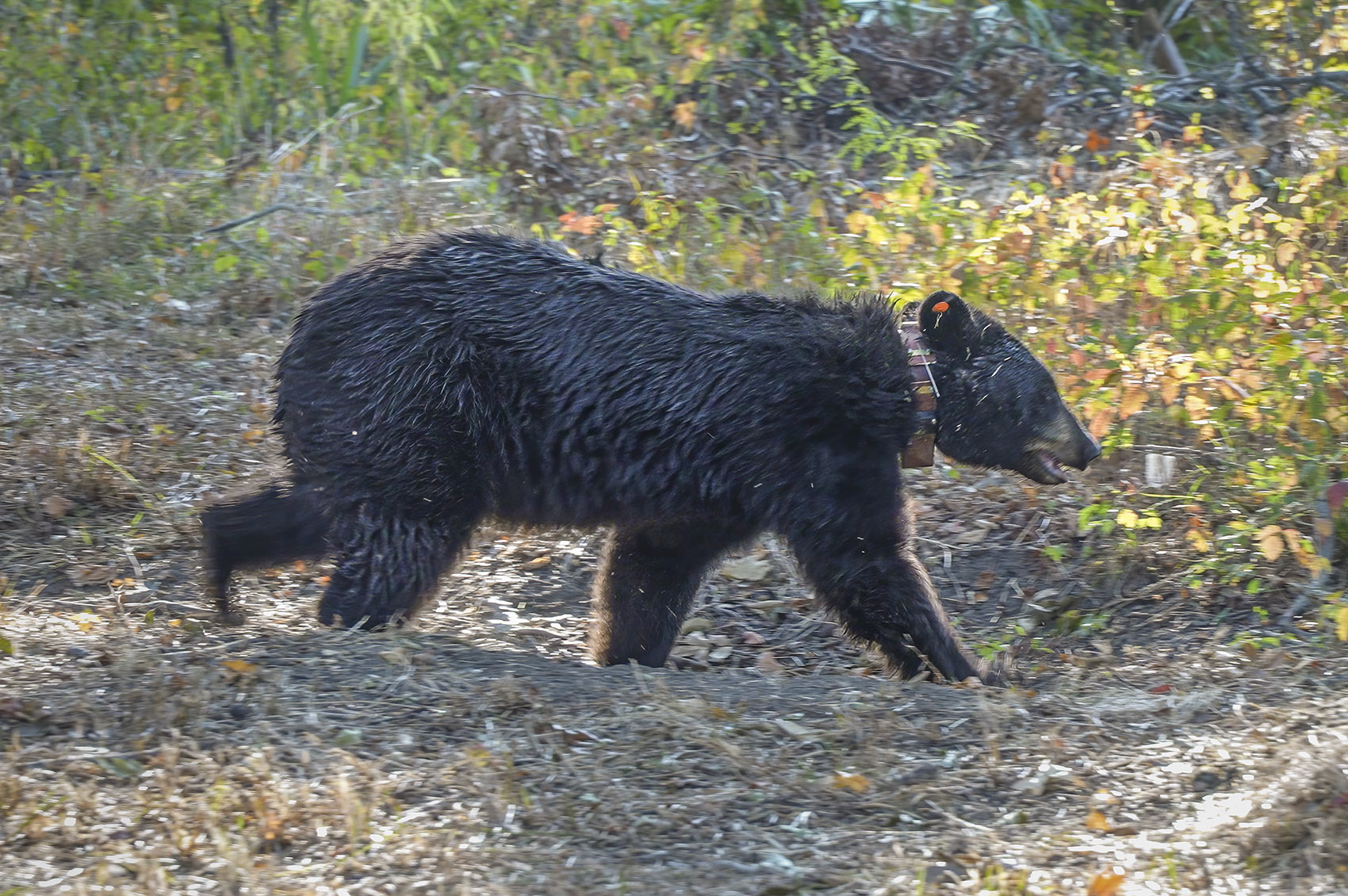
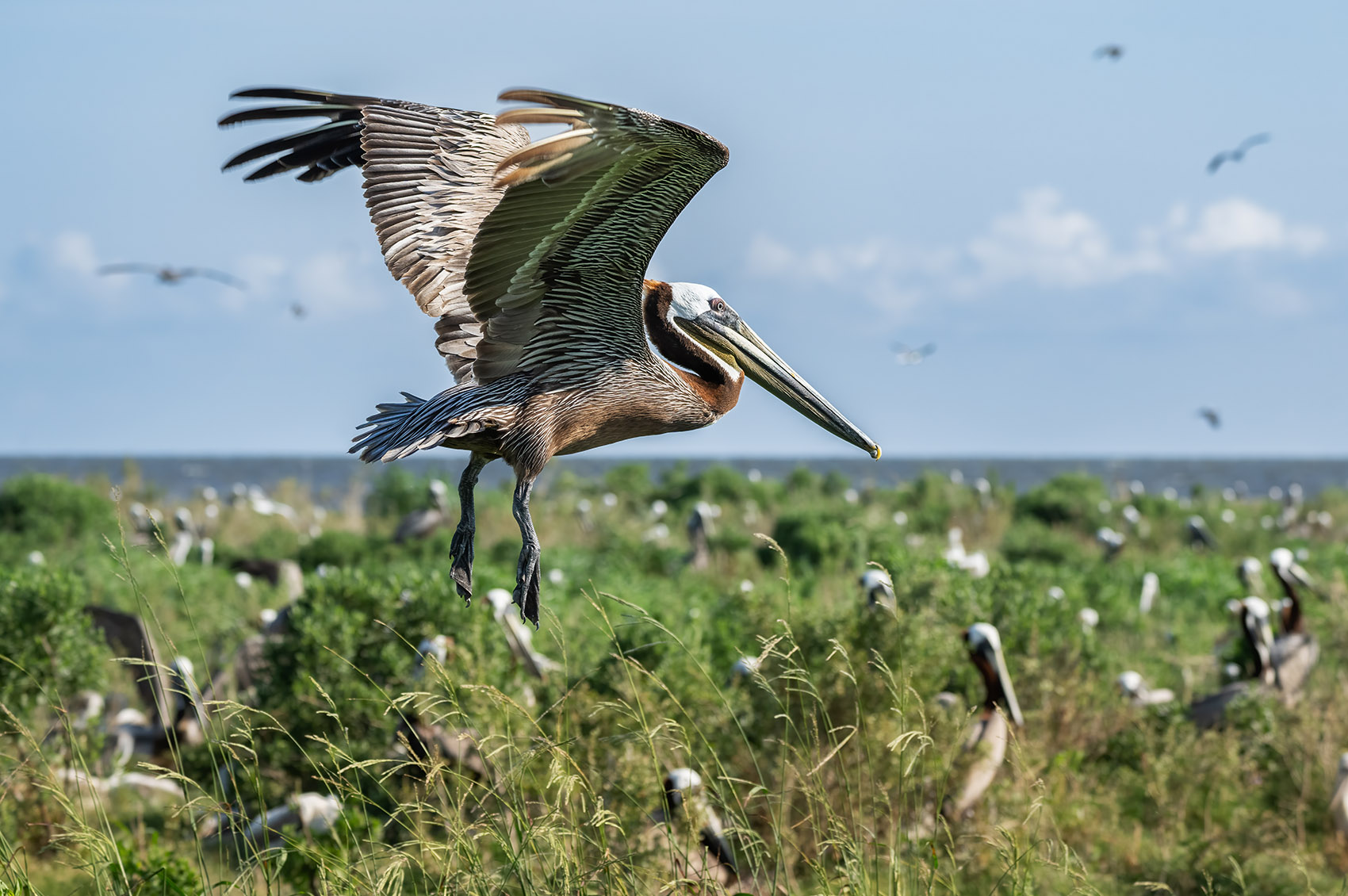

Leave a Reply